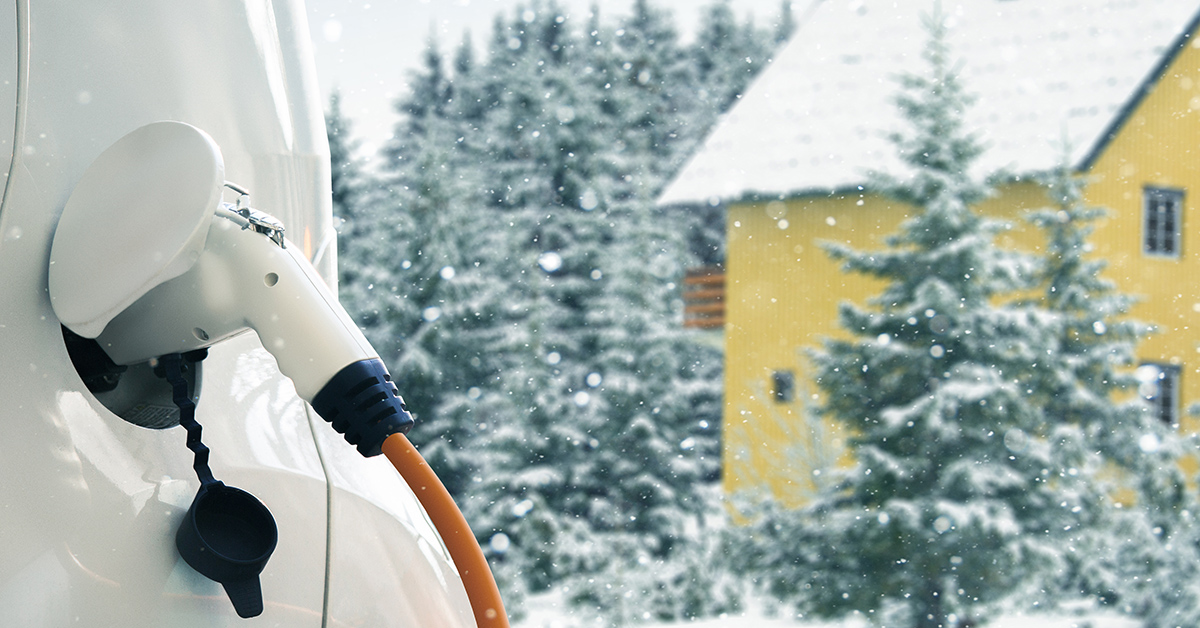Blog
Keeping Warm in Your EV This Winter

Winter is finally in full swing in Maine, which means it’s time to think about how cold temperatures might affect your comfort in your electric vehicle (EV), as well as its performance on the road.
To keep warm in your EV this winter, we recommend using your vehicle’s heated seats and/or heated steering wheel, if applicable, rather than heating the cabin. According to an American Automobile Association (AAA) study, the average winter EV driving range could decrease by as much as 41% when the heater is turned on.* Alternatively, winter range could fall by only 12% in 20° F when the car’s cabin heater is off. If you charge at home, we recommend preheating your car while it’s plugged in to warm the battery and cabin of the car before heading out. This way, the cabin and battery will be heated with electricity from the electrical grid rather than taking miles off of your vehicle’s battery range.
If you are in the market to buy an EV, you might want to consider models that are equipped with heat pump heating systems. Automakers, such as Hyundai, Kia, Nissan, Subaru, and Tesla offer efficient heat pump heating systems that can significantly improve cabin heating efficiency down to about 15° F.** A heat pump system efficiently heats a car’s cabin, therefore reducing the impact on driving range. Just like the heat pumps used in homes and other buildings, these heat pump systems transfer the existing heat from the air outside to the cabin of the car. This is a more efficient process than producing new heat using electrical resistance, and can lead to improved winter range. In a study done by Hyundai, the Ioniq Electric showed a 19% improvement in wintertime range reduction after being equipped with the heat pump.***
When driving an electric vehicle during Maine’s winter months, we also suggest that you consider the following recommendations:
- Remember to check your tire pressure on a regular basis. Cold temperatures increase the density of air, which commonly leads to lower tire pressures, increasing rolling resistance, which decreases efficiency. We recommend you check tire pressure and add air regularly to increase efficiency year-round.**
- Expect slower charge times when the temperature dips below 32° F. Colder temperatures will increase the amount of time it takes to charge your EV due to the chemical and physical reactions that make batteries work.
- Stick to the speed limit and use the regenerative braking feature on your EV. These two tips are important year-round, but are even more important during the winter season in order to preserve your vehicle’s driving range.
- Take extra precautions to not let your battery get too low when it’s cold outside – even if that means stopping at a public charging station on the way to a final destination.
These tips will help keep you cozy in your EV this winter and help preserve your vehicle’s driving range. For more information about winter EV driving, consider reading our blog, Driving an Electric Vehicle in Cold Weather.
Efficiency Maine offers instant rebates for eligible battery electric vehicles (BEVs) and plug-in hybrid electric vehicles (PHEVs) at participating Maine car dealers. Eligible BEVs and PHEVs direct from a manufacturer are eligible for mail-in rebates. For a detailed list of vehicles that qualify for Efficiency Maine rebates, visit www.efficiencymaine.com/docs/EV_Rebate_Eligible_Vehicles.pdf. To find a participating dealer near you, visit www.efficiencymaine.com/docs/EV_Accelerator_Participating_Dealers-3.pdf. Also check www.efficiencymaine.com/ev/ for our EV video library, EV guidebooks, and other resources.
*Source: www.aaa.com/AAA/common/AAR/files/AAA-Electric-Vehicle-Range-Testing-Report.pdf
** Source: www.driveelectricvt.com/blog/winter#:~:text=Tesla%20Model%20S%20and%20X,standard%20with%20heat%20pump%20systems.
*** Source: www.hyundaimotorgroup.com/story/CONT0000000000002995
To subscribe to Efficiency Maine’s blog page, please click here.
